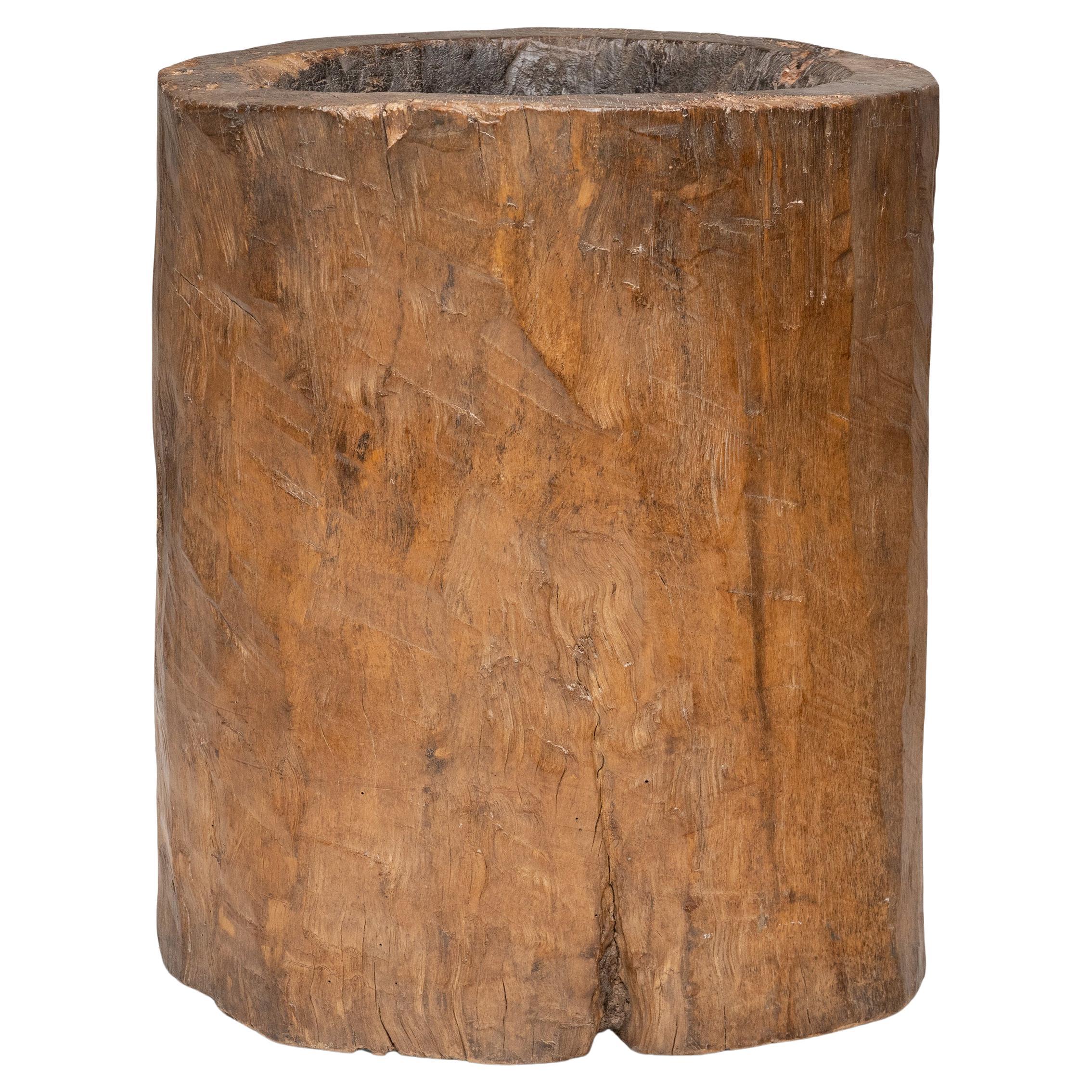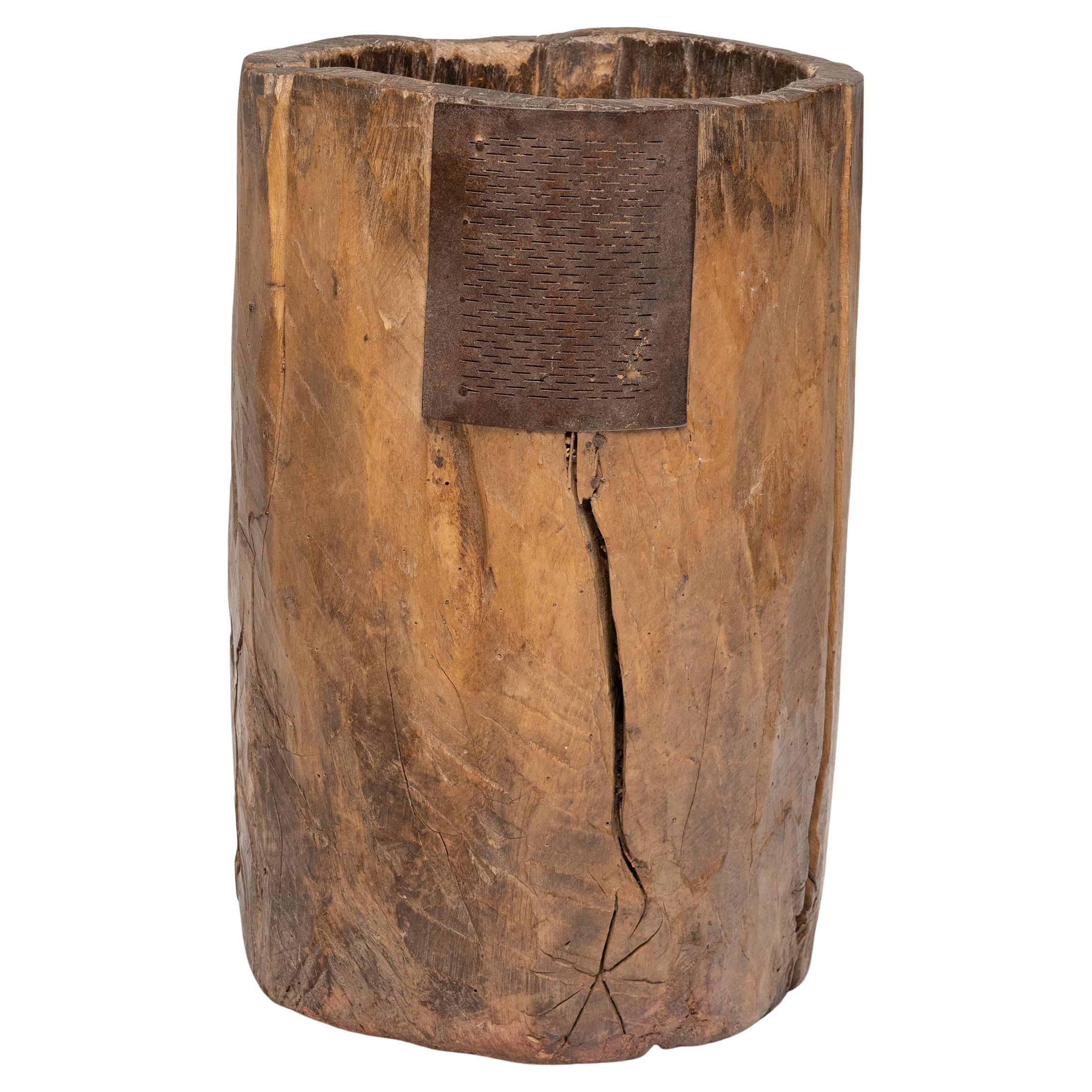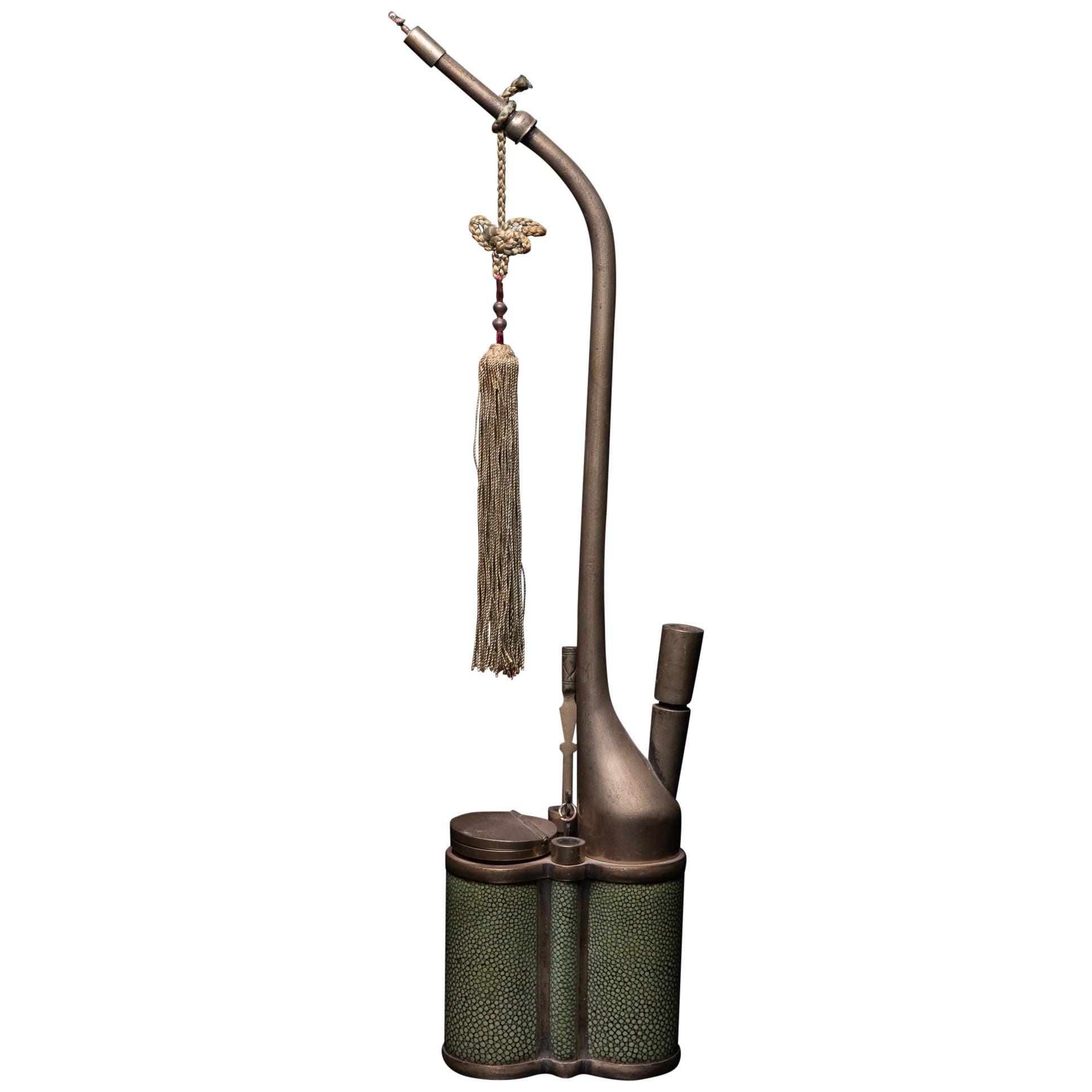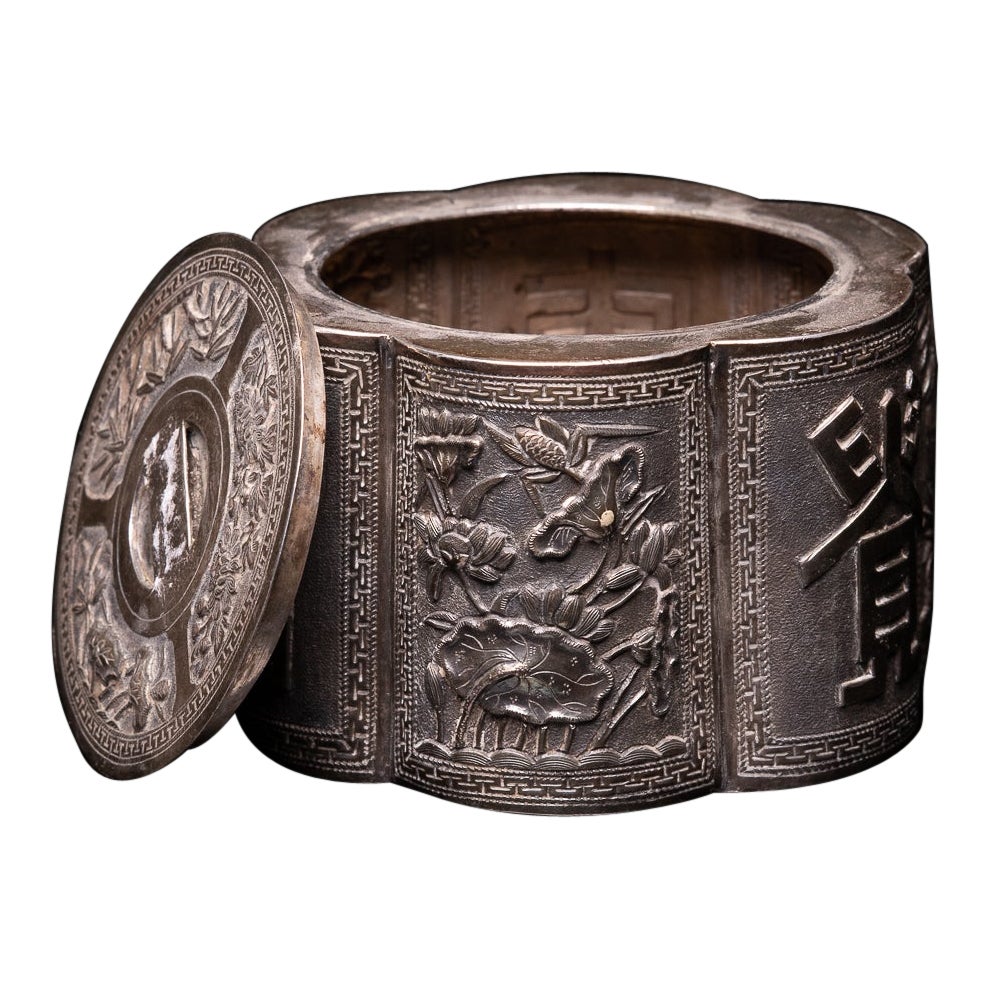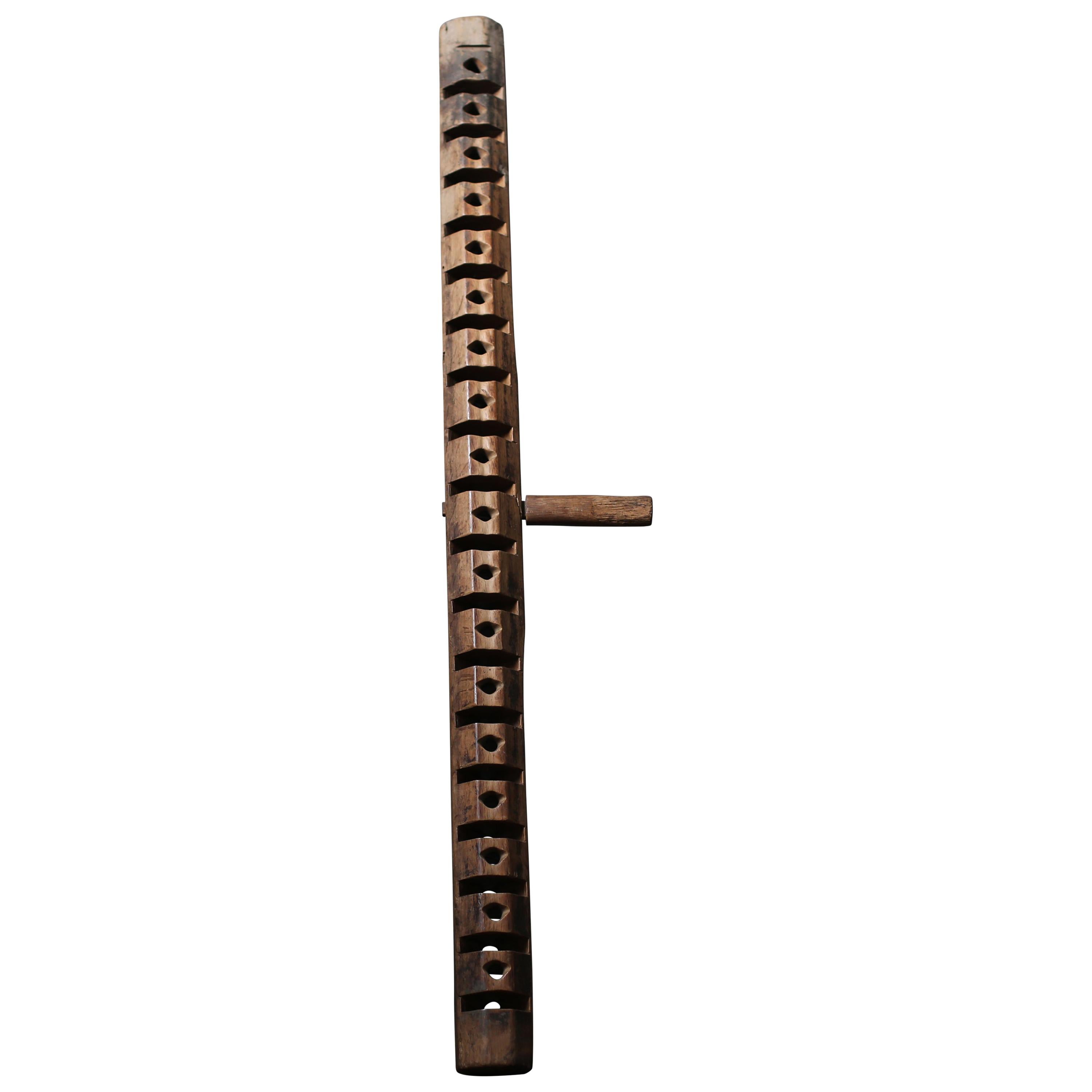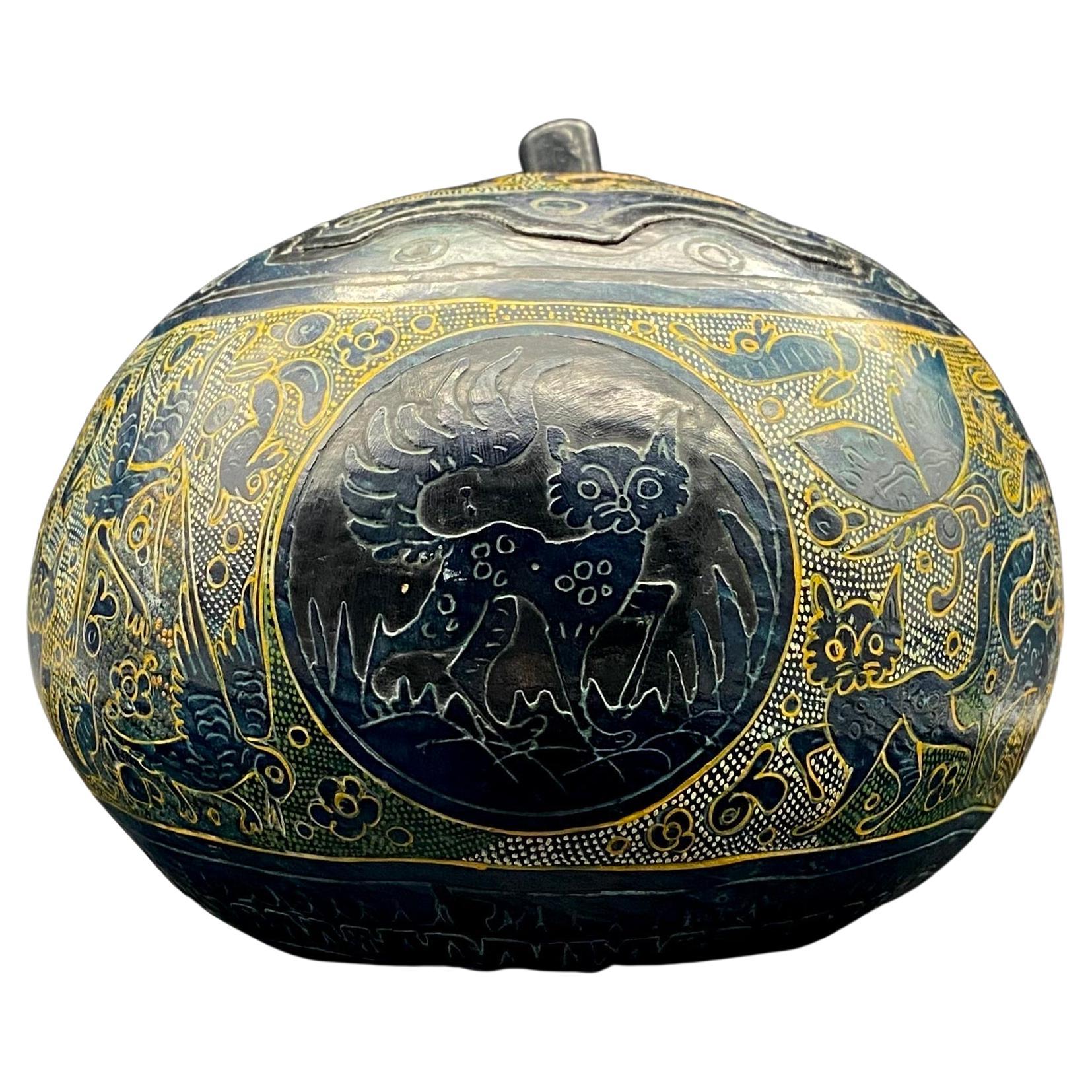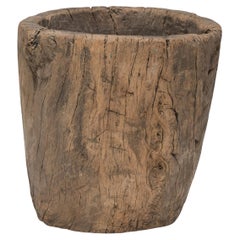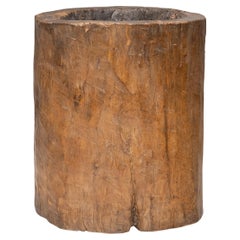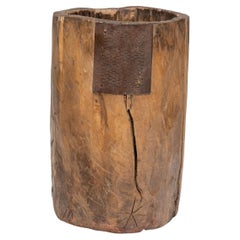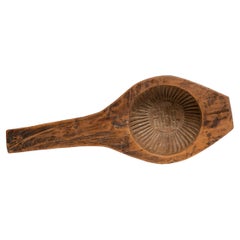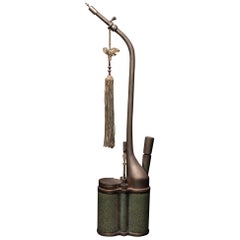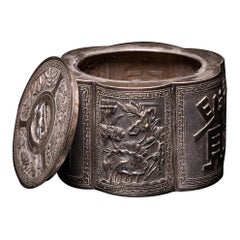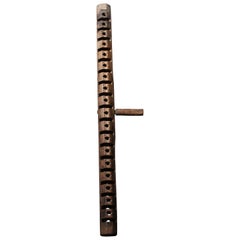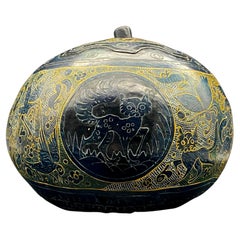Items Similar to Provincial Chinese Burden Bar, c. 1900
Want more images or videos?
Request additional images or videos from the seller
1 of 5
Provincial Chinese Burden Bar, c. 1900
About the Item
Used to tote pails of water and grain, this 19th-century yoke, or burden bar, transcends its utilitarian origins as a striking sculptural object. Fitted with the original brass finishes, the burden bar is gently tapered at the ends and softened by a rich, dark patina.
- Dimensions:Height: 1.5 in (3.81 cm)Width: 2.25 in (5.72 cm)Depth: 57 in (144.78 cm)
- Style:Qing (Of the Period)
- Materials and Techniques:
- Place of Origin:
- Period:
- Date of Manufacture:circa 1900
- Condition:Wear consistent with age and use.
- Seller Location:Chicago, IL
- Reference Number:Seller: JJ091B1stDibs: LU820028592092
About the Seller
5.0
Platinum Seller
Premium sellers with a 4.7+ rating and 24-hour response times
Established in 1997
1stDibs seller since 2006
1,666 sales on 1stDibs
Typical response time: 1 hour
- ShippingRetrieving quote...Shipping from: Chicago, IL
- Return Policy
Authenticity Guarantee
In the unlikely event there’s an issue with an item’s authenticity, contact us within 1 year for a full refund. DetailsMoney-Back Guarantee
If your item is not as described, is damaged in transit, or does not arrive, contact us within 7 days for a full refund. Details24-Hour Cancellation
You have a 24-hour grace period in which to reconsider your purchase, with no questions asked.Vetted Professional Sellers
Our world-class sellers must adhere to strict standards for service and quality, maintaining the integrity of our listings.Price-Match Guarantee
If you find that a seller listed the same item for a lower price elsewhere, we’ll match it.Trusted Global Delivery
Our best-in-class carrier network provides specialized shipping options worldwide, including custom delivery.More From This Seller
View AllProvincial Chinese Trunk Mortar, c. 1900
Located in Chicago, IL
This large wooden mortar dates to the late 19th century and was originally used for crushing rice, grain, spices and other foodstuffs. Carved from a single tree trunk, the mortar has...
Category
Antique Late 19th Century Chinese Organic Modern Antiquities
Materials
Wood
Provincial Chinese Trunk Mortar, c. 1900
Located in Chicago, IL
This large wooden mortar dates to the late 19th century and was originally used for crushing rice, grain, spices and other foodstuffs. Carved from a single tree trunk, the mortar has...
Category
Antique Late 19th Century Chinese Primitive Antiquities
Materials
Wood
Provincial Chinese Trunk Mortar, c. 1900
Located in Chicago, IL
This large wooden mortar dates to the late 19th century and was originally used for crushing rice, grain, spices and other foodstuffs. Carved from a single tree trunk, the mortar has...
Category
Antique Late 19th Century Chinese Rustic Antiquities
Materials
Iron
Handheld Chinese Mooncake Mold, c. 1900
Located in Chicago, IL
This late 19th century hand-held wood press is carved with a large mold used for shaping festive mooncakes. Packed with lotus root, red bean, or other regional fillings, mooncakes ar...
Category
Early 20th Century Chinese Qing Antiquities
Materials
Wood
Handheld Chinese Mooncake Mold with Lotus Pods, c. 1900
Located in Chicago, IL
This late 19th century hand-held wood press is carved with a large mold used for shaping festive mooncakes. Packed with lotus root, red bean, or other regional fillings, mooncakes ar...
Category
Early 20th Century Chinese Qing Antiquities
Materials
Wood
Chinese Woven Garden Basket, c. 1900
Located in Chicago, IL
It is easy to imagine someone, long ago, gathering a harvest from their garden or strolling to the market with this beautiful basket tucked under their arm. Hand-woven of young willo...
Category
Early 20th Century Chinese Rustic Decorative Baskets
Materials
Bentwood, Willow
You May Also Like
Nineteenth Century Chinese Metal Water Pipe, Covered with Green Dyed Ray Skin
Located in Leuven , BE
The Chinese water pipes for smoking opium or tobacco could be beautifully decorated with enamel or be coated with precious materials such as ray skin. How were they used? The heated opium was placed in the lidded well of the pipe. The smoker could inhale the fumes through this pipe. Most water pipes have a holder for storing the maintenance tools, such as a little brush, a spike and tweezers. The water pipes could easily be smoked while sitting down, unlike the regular opium pipes...
Category
Antique 19th Century Chinese Antiquities
Materials
Metal
Antique Chinese Multi-Lobed Opium Box in Silver, Decorated with Reliefs with Ide
Located in Leuven , BE
Beautiful opium box decorated with reliefs with ideograms (one of the two refers to wealth), a chrysanthemum (symbol of longevity) and foliage. This silver m...
Category
Antique 19th Century Chinese Antiquities
Materials
Silver
Japanese Antique Wooden Object
Located in Sammu-shi, Chiba
An old tool for making textiles in Japan.
It's a very rare object.
The light and shadow that pass through the even holes are very beautiful.
A nice art ob...
Category
Antique Late 19th Century Asian Meiji Antiquities
Materials
Oak
Kadjar Lacquered Paper Mache Box
Located in Beuzevillette, FR
Beautiful lacquered paper mache box decorated with imaginary animals (that look like cats) and plant motifs.
The box seems to take the shape of a vege...
Category
Early 20th Century Antiquities
Materials
Paper
Green Crackled Porcelain Table Water Pipe with Metal Strapping from Vietnam
Located in Leuven , BE
The bowl of the Vietnamese water pipe is jar-shaped. The metal handle allows easy carrying and moving of the object. The pipe stem that is normally places in the water tank, is missi...
Category
Antique 19th Century Chinese Antiquities
Materials
Porcelain
Woman's Footwear with Bandaged Feet China Circa 1900
Located in Beuzevillette, FR
Woman's shoe with bandaged feet, in embroidered satin.
The custom of bandaged feet is said to have appeared in China in the 10th century during the Tang Dynasty, when the emperor as...
Category
Antique 1880s Chinese Chinoiserie Textiles
Materials
Satin
